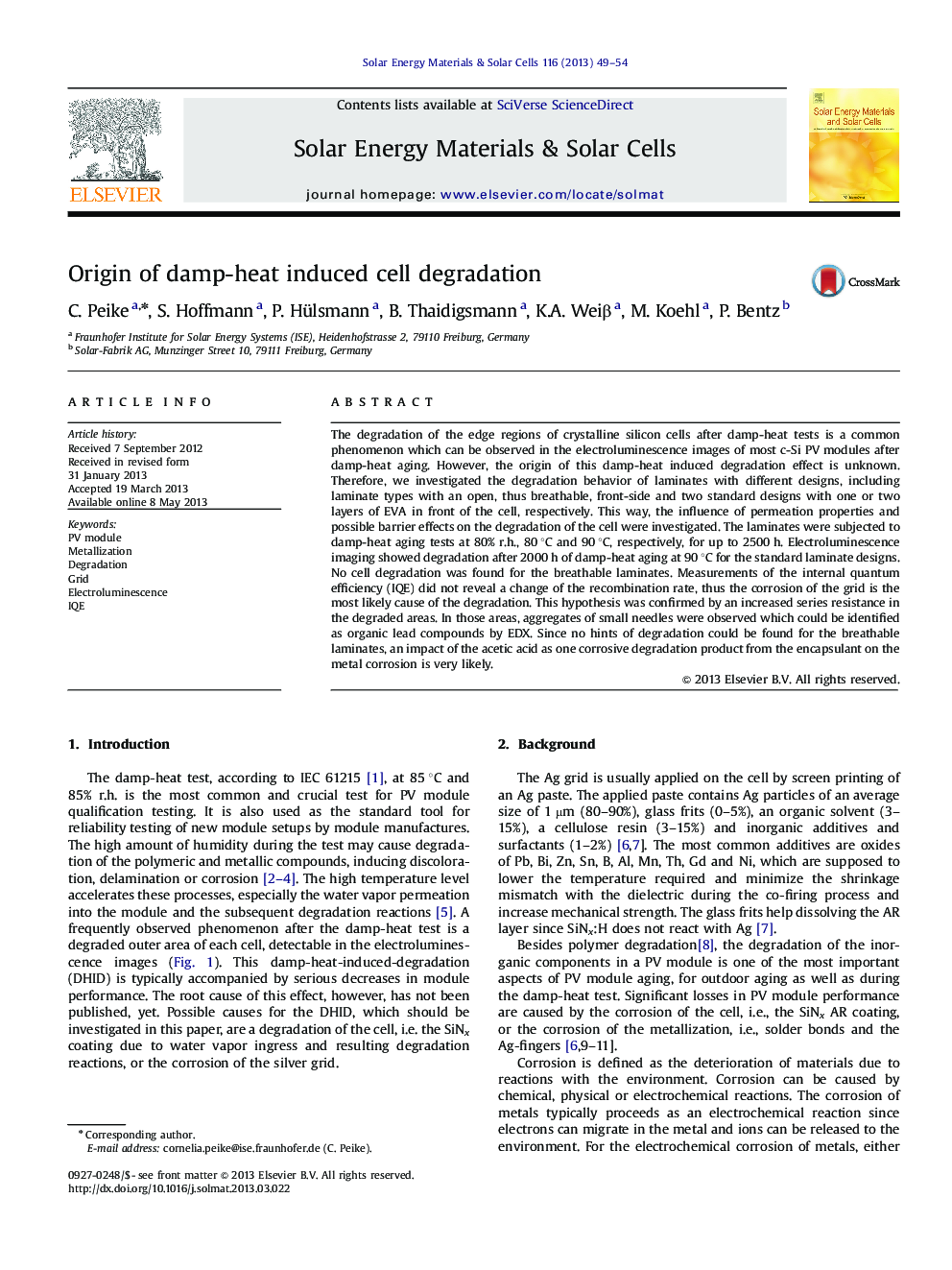| Article ID | Journal | Published Year | Pages | File Type |
|---|---|---|---|---|
| 6536210 | Solar Energy Materials and Solar Cells | 2013 | 6 Pages |
Abstract
The degradation of the edge regions of crystalline silicon cells after damp-heat tests is a common phenomenon which can be observed in the electroluminescence images of most c-Si PV modules after damp-heat aging. However, the origin of this damp-heat induced degradation effect is unknown. Therefore, we investigated the degradation behavior of laminates with different designs, including laminate types with an open, thus breathable, front-side and two standard designs with one or two layers of EVA in front of the cell, respectively. This way, the influence of permeation properties and possible barrier effects on the degradation of the cell were investigated. The laminates were subjected to damp-heat aging tests at 80% r.h., 80 °C and 90 °C, respectively, for up to 2500 h. Electroluminescence imaging showed degradation after 2000 h of damp-heat aging at 90 °C for the standard laminate designs. No cell degradation was found for the breathable laminates. Measurements of the internal quantum efficiency (IQE) did not reveal a change of the recombination rate, thus the corrosion of the grid is the most likely cause of the degradation. This hypothesis was confirmed by an increased series resistance in the degraded areas. In those areas, aggregates of small needles were observed which could be identified as organic lead compounds by EDX. Since no hints of degradation could be found for the breathable laminates, an impact of the acetic acid as one corrosive degradation product from the encapsulant on the metal corrosion is very likely.
Related Topics
Physical Sciences and Engineering
Chemical Engineering
Catalysis
Authors
C. Peike, S. Hoffmann, P. Hülsmann, B. Thaidigsmann, K.A. Weiβ, M. Koehl, P. Bentz,
